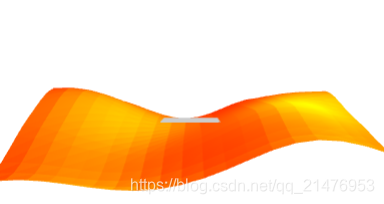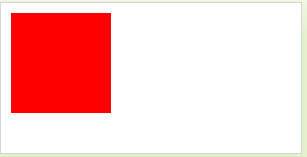作者: DSLMing
时间: 2019.10.24
参考:
FunWithWebGL2 017 Terrains
过程纹理-地形
纹理一般分成两类, 直接贴图的图片、通过代码生成纹理----过程纹理(procedural texture)。过程纹理简单来说就是一个时间(运算)换空间(内存)的换算。
使用triangle_strip绘制模式来连接顶点网格的点以创建平面。 在perlin噪声的帮助下,我们将平面变成了丘陵地形,然后通过组装一个简单的着色器以应用基本照明来完成它,从而更容易从视觉上看到我们的地形曲率。 我们通过使用一些在网上找到的着色器代码来完成它,以创建低多边形(例如,地形的漫反射着色)。

1、Perlin Noise(柏林噪声)
Perlin Noise 可以用来表现自然界中无法用简单形状来表达的物体的形态,比如火焰、烟雾、表面纹路等,地形的高度图是通过 Perlin Noise 生成的。

Perlin Noise有两种:Simplex噪声、分形噪声。
2、使用canvas 创建图像
创建 100*100 像素的 ImageData 对象,其中每个像素都是红色的,然后把它放到画布上。

var c=document.getElementById("myCanvas");
var ctx=c.getContext("2d");
// imgData.data.length = width * height * 4
var imgData=ctx.createImageData(100,100);
for (var i=0; i<imgData.data.length; i+=4) {
// RGBA
imgData.data[i+0]=255;
imgData.data[i+1]=0;
imgData.data[i+2]=0;
imgData.data[i+3]=255;
}
ctx.putImageData(imgData,10,10);
每个像素由4个值构成, 分别对应RGBA。例如第一个像素的构成:
R: imgData.data[0]
G: imgData.data[1]
B: imgData.data[2]
A: imgData.data[3]
3、随机梯度
- 在生成梯度时,理论上应该任意生成一个长度为1的向量。
- 一维的情况下可以在
{8,7,6,5,4,3,2,1,-1,-2,-3,-4,-5,-6,-7,-8}这16个整数中任选一个作为斜率,这样可以方便的通过对坐标值进行位操作实现。 - 二维的情况下,梯度可以从
{(1,2),(2,1),(-1,2),(-2,1),(-1,-2),(-2,-1),(1,-2),(2,-1)}这8个向量之中随机选择一个。这8个向量具有相同的长度,因此点积后的归一化计算可以省略。 - 三维的情况下,梯度可以从以原点为中心,边长为2的正方体每边的中点共12个向量中选择,即从
{(0,1,1),(0,1,-1),(0,-1,-1),(0,-1,1),(1,0,1),(1,0,-1),(-1,0,-1),(-1,0,1),(1,1,0),(-1,1,0),(-1,-1,0),(1,-1,0)}中选择一个。在实际实现 时也可以通过位操作进行。
4、随机排列数组
Perlin还预计算了一个随机排列数组p[n],p[n]里面存储的是打乱后的0~n-1的排列值。当我们想要得到(x, y)处晶格的梯度向量时,可以使用:
。
5、生成地形
static createMesh(gl,w,h,rLen,cLen,keepRawData){
// 计算Z位置时行的起始位置
let rStart = w / -2
// 计算X位置时列的起始位置
let cStart = h / -2
// 创建平面所需的总顶点
let vLen = rLen * cLen
// 创建三角带所需的总索引值(不计算退化三角位置)
let iLen = (rLen-1)*cLen
// 计算X位置时列的增量值
let cInc = w / (cLen-1)
// 计算Z位置时行的增量值
let rInc = h / (rLen-1)
// Current Row
let cRow = 0
// Current Column
let cCol = 0
// Vertice Array
let aVert = []
// Index Array
let aIndex = []
// UV Map Array
let aUV = []
// 计算UV的X UV位置时列的增量值
let uvxInc = 1 / (cLen-1)
// 计算Z UV位置时的行增量值
let uvyInc = 1 / (rLen-1)
// Perlin Noise
noise.seed(1);
// temporary height
let h = 0
// 如何消除佩林噪声的频率
let freq = 13
// Max Height
let maxHeight = -3
// ..................................
// Generate the vertices and the index array.
for(var i=0; i < vLen; i++){
cRow = Math.floor(i / cLen); //Current Row
cCol = i % cLen; //Current Column
h = noise.perlin2((cRow+1)/freq, (cCol+1)/freq) * maxHeight;
//Create Vertices,x,y,z
aVert.push(cStart+cCol*cInc, 0.2 + h, rStart+cRow*rInc);
//Create UV s,t. Spread the 0,0 to 1,1 throughout the whole plane
aUV.push( (cCol == cLen-1)? 1 : cCol * uvxInc,
(cRow == rLen-1)? 1 : cRow * uvyInc );
//Create the index, We stop creating the index before the loop ends creating the vertices.
if(i < iLen){
//Column index of row R and R+1
aIndex.push(cRow * cLen + cCol, (cRow+1) * cLen + cCol);
//Create Degenerate Triangle, Last AND first index of the R+1 (next row that becomes the top row )
if(cCol == cLen-1 && i < iLen-1) aIndex.push( (cRow+1) * cLen + cCol, (cRow+1) * cLen);
}
}
//..................................
//Generate the Normals using finite difference method
var x, //X Position in grid
y, //Y Position in grid
p, //Temp Array Index when calcating neighboring vertices
pos, //Using X,Y, determine current vertex index position in array
xMax = cLen-1, //Max X Position in Grid
yMax = rLen -1, //Max Y Position in Grid
nX = 0, //Normal X value
nY = 0, //Normal Y value
nZ = 0, //Normal Z value
nL = 0, //Normal Vector Length
hL, //Left Vector height
hR, //Right Vector Height
hD, //Down Vector height
hU, //Up Vector Height
aNorm = []; //Normal Vector Array
for(var i=0; i < vLen; i++){
y = Math.floor(i / cLen); //Current Row
x = i % cLen; //Current Column
pos = y*3*cLen + x*3; //X,Y position to Array index conversion
//-----------------
//Get the height value of 4 neighboring vectors: Left,Right,Top Left
if(x > 0){ //LEFT
p = y*3*cLen + (x-1)*3; //Calc Neighbor Vector
hL = aVert[p+1]; //Grab only the Y position which is the height.
}else hL = aVert[pos+1]; //Out of bounds, use current
if(x < xMax){ //RIGHT
p = y*3*cLen + (x+1)*3;
hR = aVert[p+1];
}else hR = aVert[pos+1];
if(y > 0){ //UP
p = (y-1)*3*cLen + x*3;
hU = aVert[p+1];
}else hU = aVert[pos+1];
if(y < yMax){ //DOWN
p = (y+1)*3*cLen + x*3;
hD = aVert[p+1];
}else hD = aVert[pos+1];
//-----------------
//Calculate the final normal vector
nX = hL - hR;
nY = 2.0;
nZ = hD - hU;
nL = Math.sqrt( nX*nX + nY*nY + nZ*nZ); //Length of vector
aNorm.push(nX/nL,nY/nL,nZ/nL); //Normalize the final normal vector data before saving to array.
}
//..................................
var mesh = gl.fCreateMeshVAO("Terrain",aIndex,aVert,aNorm,aUV,3);
mesh.drawMode = gl.TRIANGLE_STRIP;
if(keepRawData){ //Have the option to save the data to use for normal debugging or modifying.
mesh.aVert = aVert;
mesh.aNorm = aNorm;
mesh.aIndex = aIndex;
}
return mesh;
}
参考
【图形学】谈谈噪声
Noise 噪声
Perlin noise
Perlin噪声
如何在游戏中使用Perlin Noise
噪音 - Perlin Noise
Unity3D教程:PerlinNoise原理及实现
